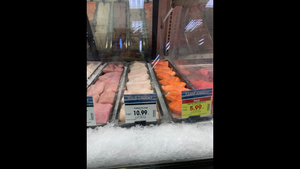2012 Power 50: No. 28 Bob McDonald
Procter & Gamble currently serves approximately 4.4 billion customers, or 64% of the global population. But Bob McDonald isn’t ready to stop yet. By tapping into new countries and expanding with new products, the chairman, president and chief executive officer plans to have P&G reach 5 billion people by 2015.
July 18, 2012
 Procter & Gamble currently serves approximately 4.4 billion customers, or 64% of the global population. But Bob McDonald isn’t ready to stop yet. By tapping into new countries and expanding with new products, the chairman, president and chief executive officer plans to have P&G reach 5 billion people by 2015.
Procter & Gamble currently serves approximately 4.4 billion customers, or 64% of the global population. But Bob McDonald isn’t ready to stop yet. By tapping into new countries and expanding with new products, the chairman, president and chief executive officer plans to have P&G reach 5 billion people by 2015.
In 2012, P&G has introduced a Febreeze car vent clip, its first product in the U.S. car care market, and Tide Pods, which represent two-thirds of the unit-dose laundry segment. And this fiscal year (which ended as SN went to press), it’s also expanding familiar brands such as Fusion ProGlide into 20 new markets. The company has also launched its Safeguard hand-washing initiative into seven African countries and now has its oral care business in every market in Latin America.
To continue this growth, McDonald outlined a two-part plan for P&G that he’s labeled “Where to Play,” identifying which categories and countries will get the majority of the focus, and “How to Win,” planning innovation, productivity and cost reductions and improving the consistency of P&G’s execution.
“This focus will deliver better balance in our results across the top and bottom lines and over the short and long term,” he said. “But let me be clear, we will continue to invest behind our brands at leadership levels but we do see opportunities to increase the efficiency and the effectiveness of our marketing spend and that will allow us to reinvest those savings behind our business.”
On June 1, P&G finalized the sale of Pringles to Kellogg Co. McDonald estimates the $2.7 billion cash sale will net P&G $1.4 billion to $1.5 billion.
McDonald is also pursuing opportunities for Procter & Gamble to work together with other corporations. In addition to his multi-hyphenate title at P&G, McDonald was recently named the chair of the U.S.-China Business Council, which brings together 250 American companies that do business with China. China is also P&G’s second largest market.
“I am proud to lead the U.S.-China Business Council, because I believe relations between China and the U.S. are critical — not just for our two countries, but for the entire world,” he said.
Procter & Gamble also joined four other corporations in forming the PET Collaborative, which works on developing and using plant-based plastics.
“We know that as we continue to grow, we must grow responsibly, so we have integrated sustainability into our business strategy,” McDonald said. “Part of our long-term vision for the future is to make all of our products from 100% renewable or recycled materials. While there are many ways to deliver against this, we have found that innovative cooperation, not isolated competition, is the key to reaching this goal.”
But McDonald is acutely aware that these innovations aren’t being made in a vacuum. Social, economic and internal challenges face P&G and its new and established products. P&G has seen an increase of $3.6 billion in commodity costs. The Venezuelan government mandated price reductions.
“None of these are excuses,” he said bluntly. “It’s our job to overcome these — but we haven’t always been able to do this, in part because we haven’t been hitting on all cylinders internally. These are all — external and internal — challenges we must, and will, overcome.”
About the Author
You May Also Like




